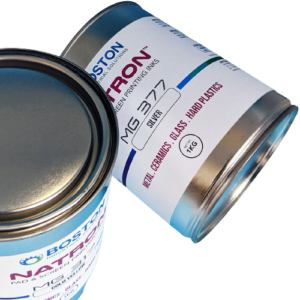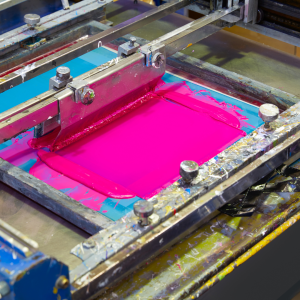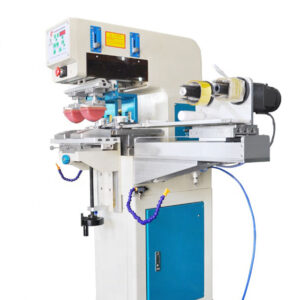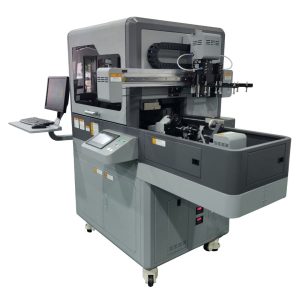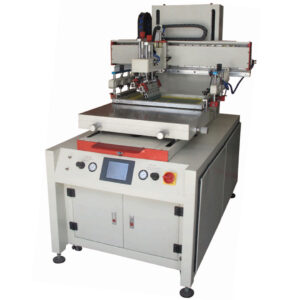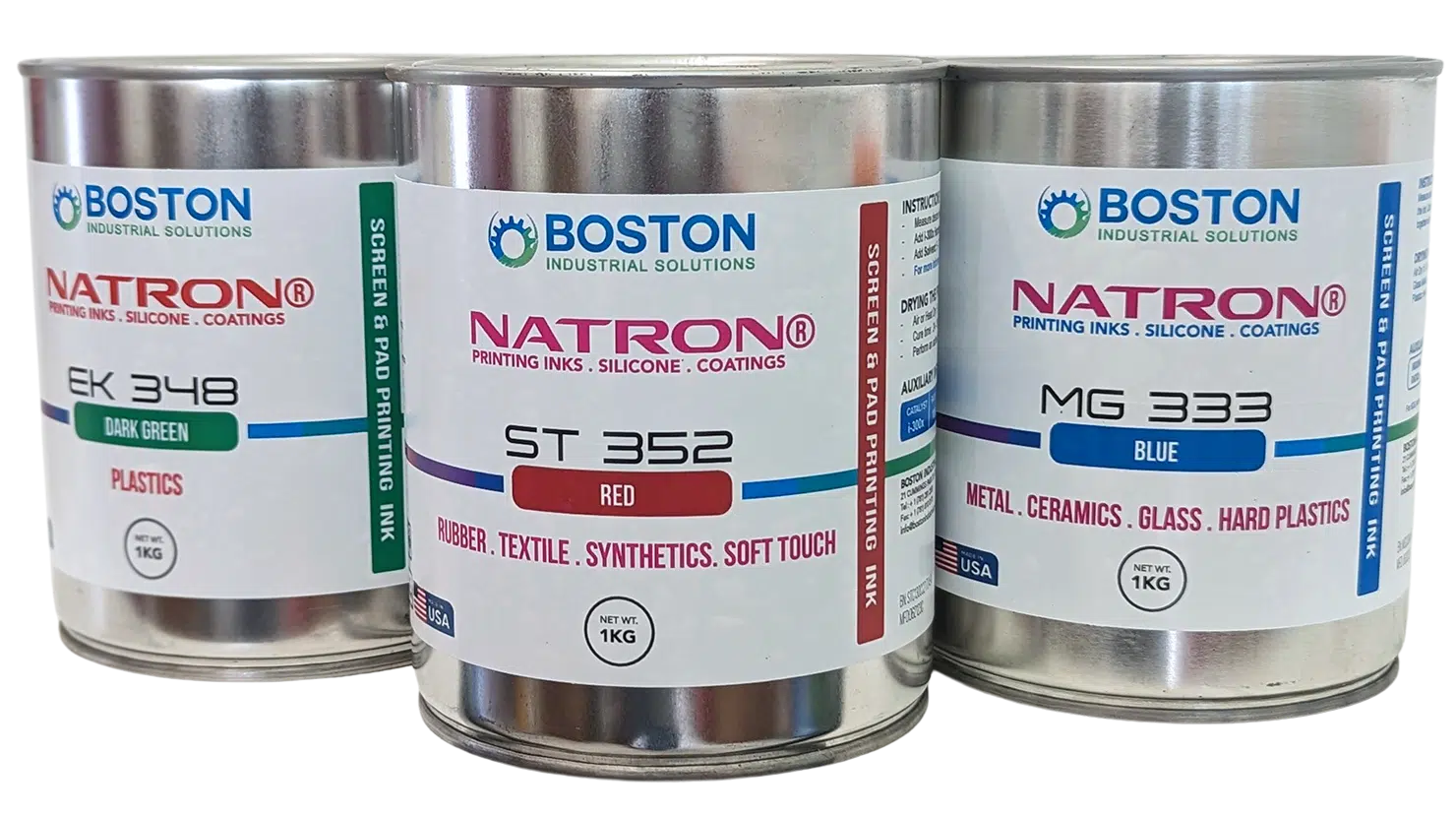What is a pad printing solvent?
Pad printing ink solvents are specialized chemicals added to the pad printing ink. These chemicals dissolve and thin the ink. This makes the thinned ink suitable for transfer from the printing plate using a silicone pad printing pad to the substrate. The solvent helps the ink achieve the perfect viscosity and drying characteristics of the ink, which are critical to ink adhesion and printed image quality. The ink formulation, the substrate, and the printing environment dictate which pad printing ink solvent to use. Solvents also act ink cleaner solvent.
To use Pad printing ink solvent always add it to the ink as a percentage of the ink’s weight. Please note that different inks use different amounts of solvent. The range varies depending on colors and the type of ink used, from 5% to 70%. For example, the Natron SE-F series black ink uses 70% of the ink’s weight, while the EK series white uses only 5%. Additionally, the evaporation speed varies from one solvent to the next. For this reason, it is important to match the choice of solvent with the ink and printing environment.
Evaporating solvent speeds
Fast-evaporating pad printing ink solvents are best for high humidity and cold environments. Using this solvent in a dry and warm environment causes the ink to dry too fast, which in turn causes the ink not to transfer to the substrate. It is therefore important to determine what solvent to use in different environments. However, there are certain printing environments in which using a fast solvent makes sense, even in warm environments. For example, using a fast solvent for tagless printing leads to a solid, bright print. Pad printing on fabrics with excess solvent or a slow solvent would smudge the print. Alternatively, it would absorb the ink.
Retarder is the name given to the slowest-evaporating solvents. These solvents are oily in nature, which causes slow evaporation rates. Extremely fast-drying inks use slow solvents, especially when they are used in dry and hot environments. Additionally, these types of solvents are used in the screen-printing industry and when printing with open-inkwell pad printing machines because the printing ink is exposed to the air.
Fast-evaporating solvents
At Boston Industrial Solutions, Inc., we offer a wide variety of pad printer ink solvents. These range from fast, medium, medium-slow, and slow, depending on the ink type and solvent you are running.
- TMG Solvent: Formulated for use with MG series and GX series ink.
- TMR Solvent: Formulated with ST Series ink.
- TMF Solvent: Best with TP Series Ink
- SF Solvent: Best with SE Silicone Ink and siliart color-filling silicone inks
- TNM Solvent: Best with TP Series and EK Series Ink
Slow-evaporating solvent
- TEB Solvent: best with NxT series ink, ST Series, and MG Series
- TMS Solvent: Best with ST Series Inks
- TNR Solvent: Best with NxT Series ink, ST Series ink, TP Series ink, and EK Series ink
- TSR Solvent: Best with ST series ink
Other printing solvents
Not all solvents work with every type of pad printing ink. For example, TRM silicone ink solvent—a medium-slow evaporating solvent—formulated for use with SE Series ink, SE-F Series ink, and SilTex HD ink from textiles. It is important to note that there is no one solvent for all inks.
Ink Cleaner solvent—solvents for cleanup
To clean up excess ink on pad printing plates and ink cups after printing, you can use the solvent for your ink. Please note that certain solvents affect substrates, especially solvent-sensitive plastics. For this reason, we have developed a plastic parts cleaner for cleaning misprints on your product without physically damaging the part—Ink-Off®. This cleaner works very well on polycarbonate, ABS, and Styrene materials but can be used on all products without harm.
For more information about our pad printing ink solvents, contact us or visit our YouTube channel to learn more about printing techniques.


